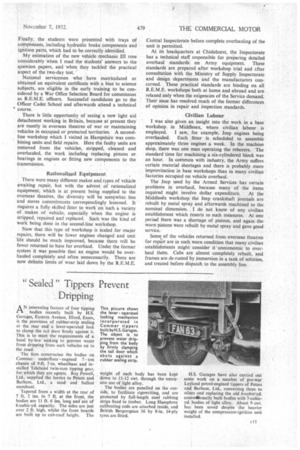" Sealed " Tippers Prevent Dripping
Page 49

If you've noticed an error in this article please click here to report it so we can fix it.
AN interesting feature of four tipping bodies recently built by H.S. Garages, Eastern Avenue, Ilford, Essex, is the provision of rubber-strip sealing at the rear and a lever-operated lock to clamp the tail door firmly against it. This is to meet the requirements of a local by-law seeking to prevent water from dripping from such vehicles on to the road.
The firm constructed the bodies on Commer underfloor engined 7 ton chassis of 9-ft. 7-in, wheelbase and installed Telehoist twin-ram tipping gear, for which they are agents. Ray Powell, Ltd., supplied the lorries to Peters and Barham, Ltd., a sand and ballast. merchant.
Tapered from a width at the rear of 7 ft. 2 ins. to 7 ft. at the front, the bodies are 11 ft. 6 ins, long and are of 6-cubic-yd. capacity. The sides are just over 2 ft. high, whilst the front boards are built up to cab-roof height. The weight of each body has been kept down to .11-12 cwt. through the extensive use of light alloy.
The bodies are panelled on the outside, to facilitate signwriting, and are protected by full-length steel rubbing strips fixed to timber. Long Humphrey calibrating rods are attached inside, and British Bergougnan 36 by 8-in. I4-ply tyres are fitted. H.S. Garages have also carried out some work on a number of pre-war Leyland petrol-engined tippers of Peters and Barham, Ltd., converting them to oilers and replacing the old 6-cubic'-yd. conventionally built bodies with 7-cubicyd. bodies of light alloy. About 9 cwt. has been saved despite the heavier weight of the compression-ignition unit installed.




























































































